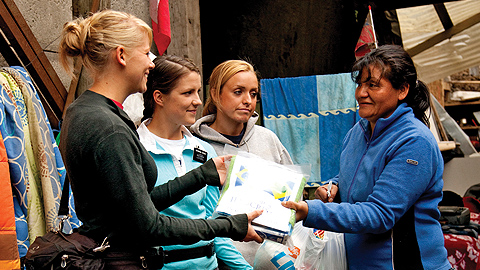
Refer to your Disaster Review and Planning for Disruptions worksheets to plan for communication disruptions. In addition, use the Critical Information—Equipment, Skills, and Communication Resources worksheet to determine how you will communicate in a disaster and what communication methods you will use.
An emergency communications plan should ensure that Church leaders and members can:
- Contact missionaries and members following a disaster.
- Determine the condition of and potential impact on missionaries, members and their homes, Church property, and the community, and be able to report that information to appropriate leaders.
- Coordinate relief efforts.
A key part of disaster response is for Church leaders to have open lines of communication with Church headquarters, Church members, and community leaders. Identify and plan for alternative communication methods that can be used in case the phone system, cellular phone service, power grid, or vehicle transportation routes are disrupted during a disaster. Such methods may include:
- Internet communications (including e-mail, social media, and instant messaging).
- Text messaging (may be available even if voice service is not).
- Amateur radio.
- Personal contact via walking, cycling, and so on (full-time missionaries might be able to help).
Alternate modes of communication are essential to an emergency response plan. Leaders are encouraged to identify individuals who may already have their own communication equipment and ask them to assist with specific ward and stake communication needs during emergencies. Wards and stakes should not purchase or accept donated satellite telephone or amateur radio equipment for use in an emergency. No permanent installation of equipment, including antennas, is permitted in any Church meetinghouse. Exceptions must be approved by the Meetinghouse Standard Plan Committee.
As needed, priesthood leaders may call welfare specialists specifically assigned to communication. Leaders may also use resources outside of the Church to assist in emergency communications planning.
Take Action:
1. Refer to the Disaster Review and Planning for Disruptions worksheets to ensure that communication is covered for both short-term and long-term disruptions.
2. Ensure that the plan reaches out to all members, particularly those with special needs.
3. Identify members with communication equipment and skills within the ward or stake.